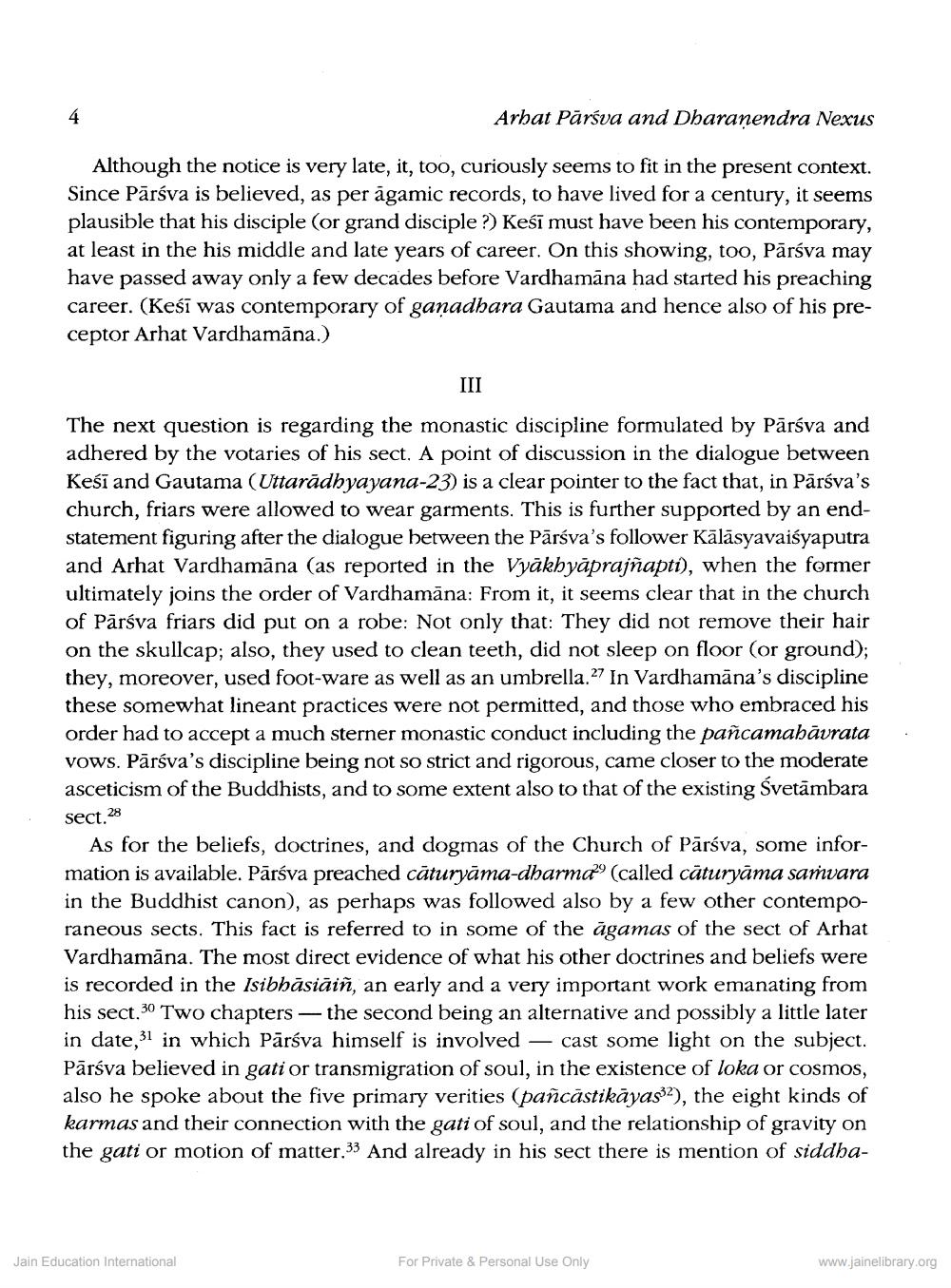________________
4
Arbat Pārsva and Dharanendra Nexus
Although the notice is very late, it, too, curiously seems to fit in the present context. Since Pārsva is believed, as per ägamic records, to have lived for a century, it seems plausible that his disciple (or grand disciple?) Kesī must have been his contemporary, at least in the his middle and late years of career. On this showing, too, Päršva may have passed away only a few decades before Vardhamana had started his preaching career. (Kesi was contemporary of ganadhara Gautama and hence also of his preceptor Arhat Vardhamana.)
III
The next question is regarding the monastic discipline formulated by Pārsva and adhered by the votaries of his sect. A point of discussion in the dialogue between Kesi and Gautama (Uttaradhyayana-23) is a clear pointer to the fact that, in Pārsva's church, friars were allowed to wear garments. This is further supported by an endstatement figuring after the dialogue between the Pārsva's follower Käläsyavaiśyaputra and Arhat Vardhamana (as reported in the Vyakhyaprajñapti), when the former ultimately joins the order of Vardhamana: From it, it seems clear that in the church of Pārsva friars did put on a robe: Not only that: They did not remove their hair on the skullcap; also, they used to clean teeth, did not sleep on floor (or ground); they, moreover, used foot-ware as well as an umbrella." In Vardhamana's discipline these somewhat lineant practices were not permitted, and those who embraced his order had to accept a much sterner monastic conduct including the pañcamabavrata vows. Pārsva's discipline being not so strict and rigorous, came closer to the moderate asceticism of the Buddhists, and to some extent also to that of the existing Śvetämbara
sect.
As for the beliefs, doctrines, and dogmas of the Church of Pārsva, some information is available. Pārsva preached caturyama-dharma (called căturyāma samvara in the Buddhist canon), as perhaps was followed also by a few other contemporaneous sects. This fact is referred to in some of the agamas of the sect of Arhat Vardhamana. The most direct evidence of what his other doctrines and beliefs were is recorded in the Isibbasiain, an early and a very important work emanating from his sect.30 Two chapters - the second being an alternative and possibly a little later in date,31 in which Pārśva himself is involved - cast some light on the subject. Pārsva believed in gati or transmigration of soul, in the existence of loka or cosmos, also he spoke about the five primary verities (pañcastikāyas), the eight kinds of karmas and their connection with the gati of soul, and the relationship of gravity on the gati or motion of matter." And already in his sect there is mention of siddha
Jain Education International
For Private & Personal Use Only
www.jainelibrary.org




